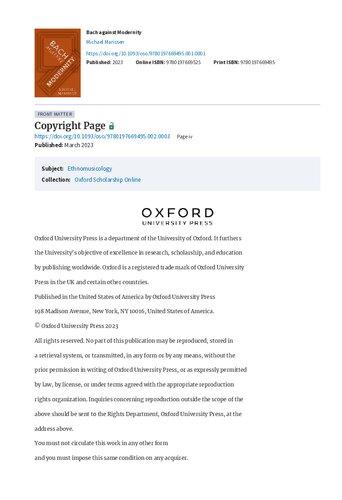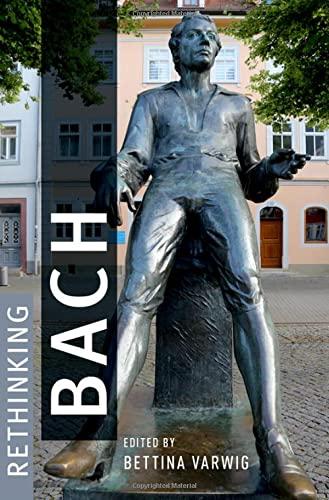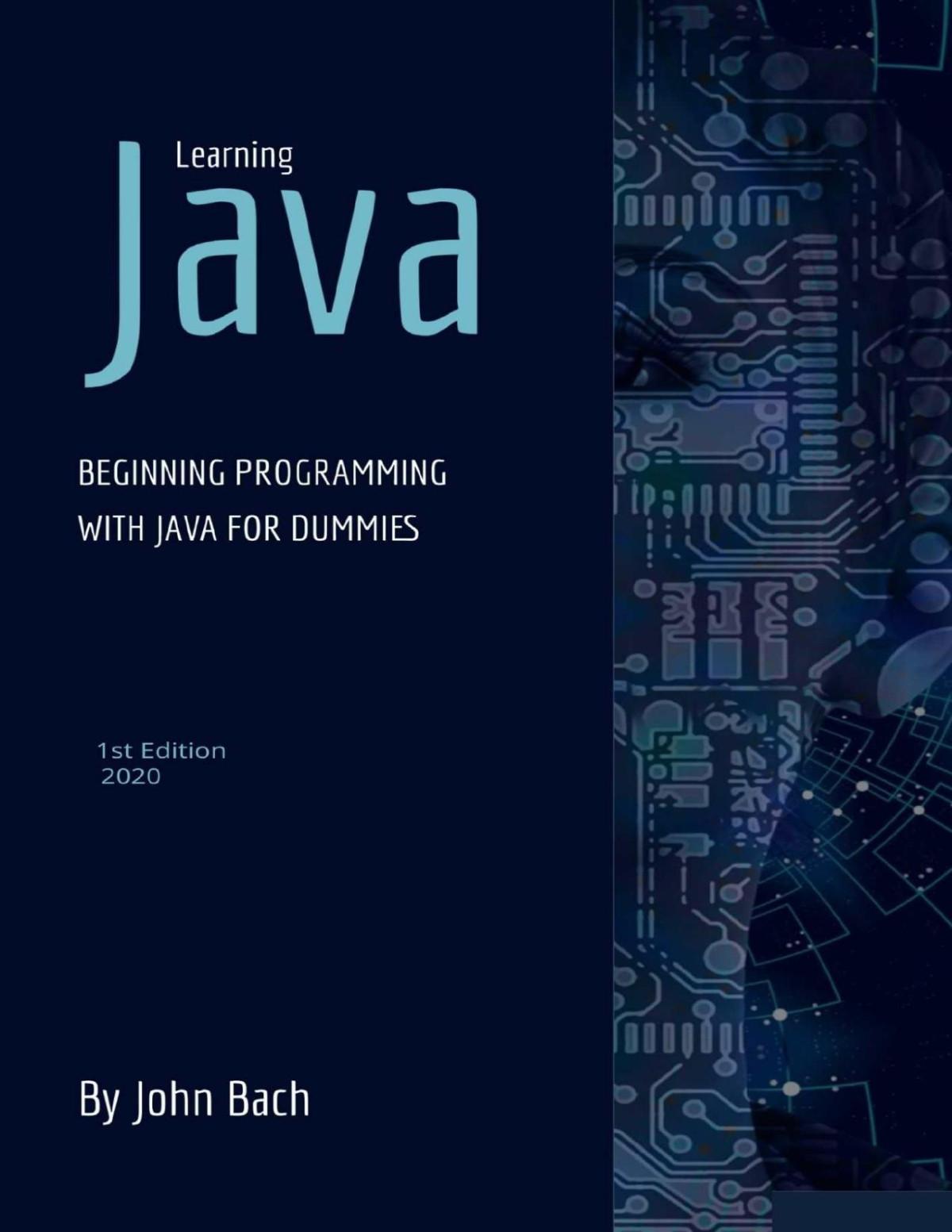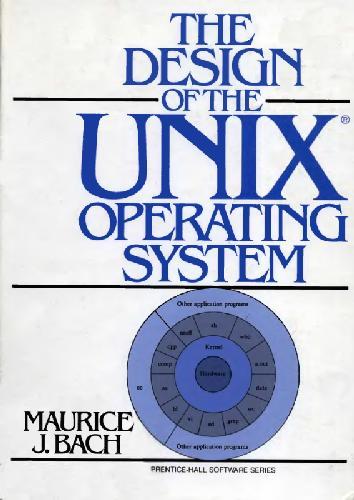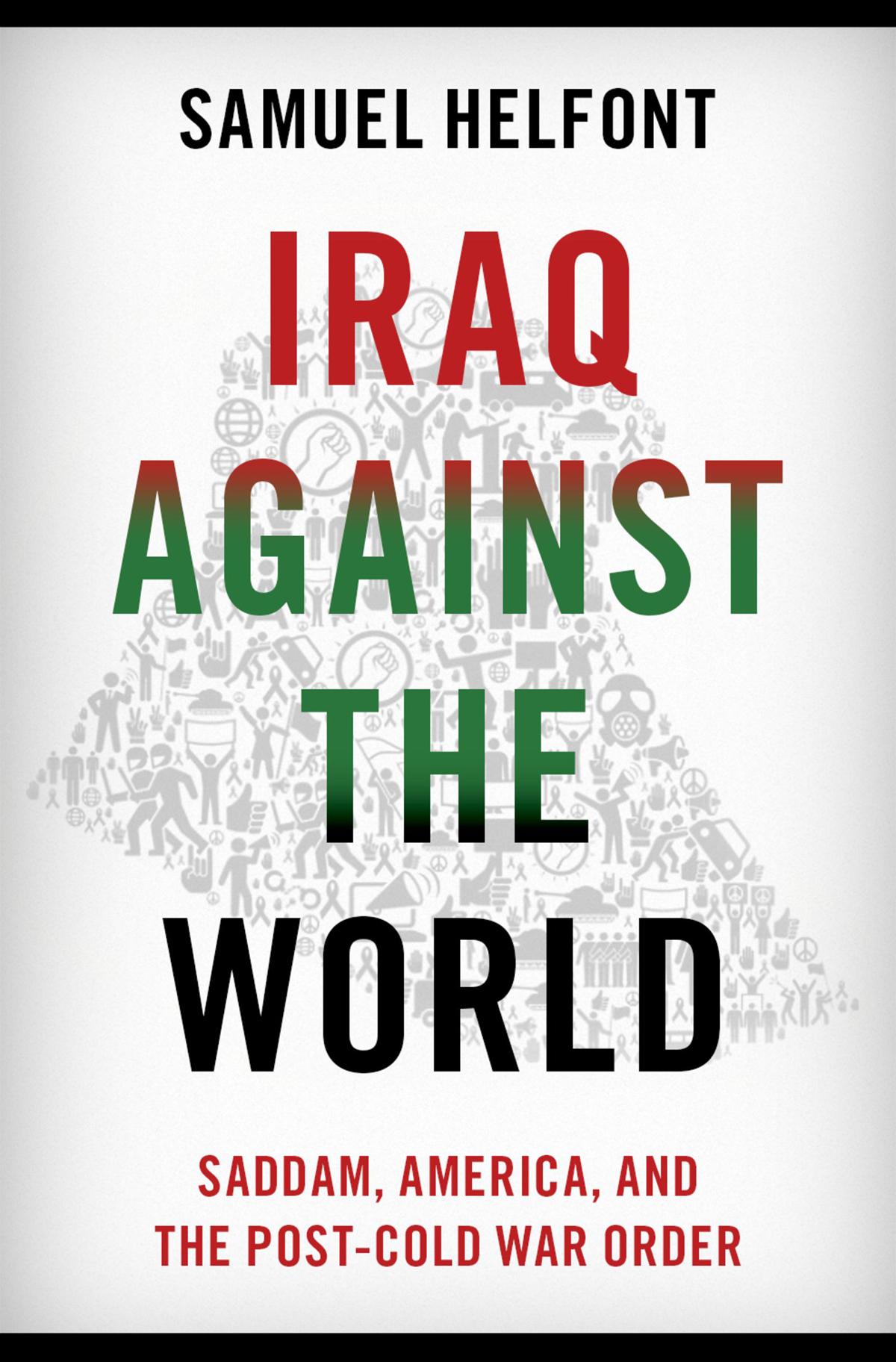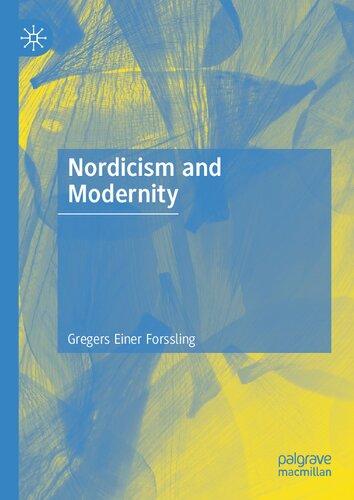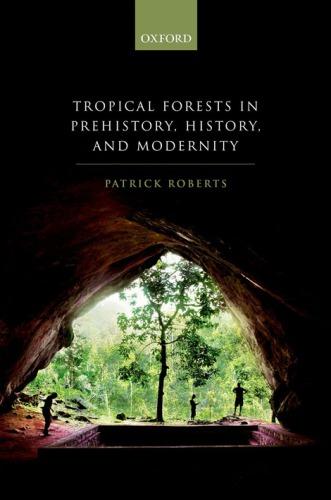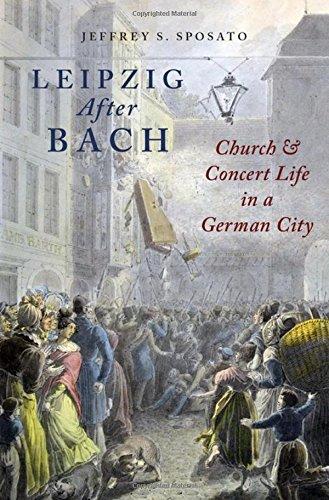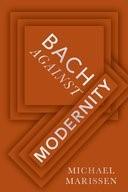Bach against Modernity Michael Marissen
Visit to download the full and correct content document: https://ebookmass.com/product/bach-against-modernity-michael-marissen/
More products digital (pdf, epub, mobi) instant download maybe you interests ...
Rethinking Bach Bettina Varwig (Editor)
https://ebookmass.com/product/rethinking-bach-bettina-varwigeditor/
Learning Java: Beginning programming with java for dummies Bach
https://ebookmass.com/product/learning-java-beginningprogramming-with-java-for-dummies-bach/
The Design of the UNIX Operating System Maurice J. Bach
https://ebookmass.com/product/the-design-of-the-unix-operatingsystem-maurice-j-bach/
Iraq Against the World Helfont
https://ebookmass.com/product/iraq-against-the-world-helfont/
Nordicism and Modernity Gregers Einer Forssling
https://ebookmass.com/product/nordicism-and-modernity-gregerseiner-forssling/
Tropical Forests in Prehistory, History, and Modernity
Patrick Roberts
https://ebookmass.com/product/tropical-forests-in-prehistoryhistory-and-modernity-patrick-roberts/
Leipzig After Bach: Church and Concert Life in a German City Jeffrey S. Sposato
https://ebookmass.com/product/leipzig-after-bach-church-andconcert-life-in-a-german-city-jeffrey-s-sposato/
Education and Modernity in Colonial Punjab: Khalsa College, the Sikh Tradition and the Webs of Knowledge, 1880-1947 1st ed. Edition Michael Philipp Brunner
https://ebookmass.com/product/education-and-modernity-incolonial-punjab-khalsa-college-the-sikh-tradition-and-the-websof-knowledge-1880-1947-1st-ed-edition-michael-philipp-brunner/
Insurgent universality: an alternative legacy of modernity Tomba
https://ebookmass.com/product/insurgent-universality-analternative-legacy-of-modernity-tomba/
FRONTMATTER
BachagainstModernity
MichaelMarissen
https://doiorg/101093/oso/97801976694950010001
Published:2023 OnlineISBN:9780197669525
CopyrightPage
https://doi.org/10.1093/oso/9780197669495.002.0003 Pageiv
Published:March2023
Subject: Ethnomusicology Collection: OxfordScholarshipOnline
PrintISBN:9780197669495
OxfordUniversityPressisadepartmentoftheUniversityofOxford Itfurthers theUniversity’sobjectiveofexcellenceinresearch,scholarship,andeducation bypublishingworldwide OxfordisaregisteredtrademarkofOxfordUniversity
PressintheUKandcertainothercountries
PublishedintheUnitedStatesofAmericabyOxfordUniversityPress 198MadisonAvenue,NewYork,NY10016,UnitedStatesofAmerica ©OxfordUniversityPress2023
Allrightsreserved.Nopartofthispublicationmaybereproduced,storedin aretrievalsystem,ortransmitted,inanyformorbyanymeans,withoutthe priorpermissioninwritingofOxfordUniversityPress,orasexpresslypermitted bylaw,bylicense,orundertermsagreedwiththeappropriatereproduction rightsorganization.Inquiriesconcerningreproductionoutsidethescopeofthe aboveshouldbesenttotheRightsDepartment,OxfordUniversityPress,atthe addressabove
Youmustnotcirculatethisworkinanyotherform andyoumustimposethissameconditiononanyacquirer
ISBN978–0–19–766949–5
DOI:10.1093/oso/9780197669495.001.0001
PrintedbySheridanBooks,Inc ,UnitedStatesofAmerica
For Lauren
Preface
This book is a follow-up to a recent volume called Bach & God. Both are collections of essays first published mostly in academic journals and then brought together for a broader audience. I had entertained the idea of naming the new volume Bach & God 2, but this seemed a bit unserious. More Bach & God suggested itself as a fitting title—some may have hoped for More Bach, Less God but then I realized that it would be most effective to go with the name of the compilation’s lead essay and call the book Bach against Modernity.
All eleven essays in this volume delve into or touch on the subject of Bach and modernity. Each can, however, be read as a standalone. None of them assumes expert background knowledge of music, religion, or history.
The two chapters of part I concern broad problems of inattentiveness to historical considerations in academic and popular writing about Bach’s relation to the present.
Chapter 1 has its origins in an invitation I received to give the keynote address in a scholarly symposium at the University of Massachusetts–Amherst entitled “Bach in the Age of Modernism, Postmodernism, and Globalization.” The idea, apparently, although it was not specified, was that I would speak on Bach as a modern figure. I had great qualms about that, however, as I had always thought of Bach as a pre-Enlightenment (i.e., premodern) figure, and so I was inclined to turn down the request. But my spouse soon hazarded the inspired suggestion that I ought to ask if it would be acceptable for me to deliver a lecture entitled “Bach against Modernity.” The organizers at first seemed taken aback by this
proposition, but they agreed that such a topic was likely to generate a lot of discussion. As an expanded version of the lecture, chapter 1 argues that Bach reflected and forcefully promoted a premodern world- and life view, both in his documented personal life and in his public music.
Chapter 2 has its origins in a brief essay for the New York Times about the premodern theological and philosophical content of Bach’s various hand-penned annotations in his personal Bible, occasioned by the long-awaited publication, in the Netherlands, of a luxurious color facsimile of those three massive volumes. The essay generated a good bit of interest, and this prompted me to expand the material into a longer article for the scholarly journal Lutheran Quarterly. Chapter 2, then, argues that on account of their lack of proper familiarity with the Lutheran historical background and foreground of Bach’s life and works, leading writers have seriously misread both Bach’s music and his Bible annotations as “modern.” They have interpreted Bach’s annotations as supporting their images of the composer as a quasi-Freudian, identity-crisisridden genius; or as a quasi-scientific, learned empiricist scholar; or as a quasi-pantheistic, broadly ecumenical aesthete; or as a Great Artist finding special creative stimuli to compose individual works. With wider and deeper knowledge of relevant historical materials, however, these views rather look like contextually improbable anachronisms—impositions of a modern mindset on an earlyeighteenth-century figure.
The four chapters of part II concern brief but close critical rehearing of key individual works of Bach’s.
Chapter 3 has its origins in a YouTube talk, for the American Bach Society’s series Tiny Bach Concerts, that provided interpretive background for a video performance of the soprano aria from Bach’s Cantata 64 by Maria Keohane, soprano, and Fredrik From, violin, with Concerto Copenhagen, directed by Lars Ulrik Mortensen. This chapter argues that Bach’s strange, systematic disintegration of a dance form in this aria was designed to highlight several
main themes in a premodern Lutheran viewpoint that was continually pitted against what conservative Lutherans like him took to be the undue and indeed dangerous optimism of Enlightenment thinking: his aria setting proclaims that the present world is fundamentally not good, that humanism and its attainments ultimately add up to nothing (people cannot fundamentally or reliably make the world better), and that only eternity, not problematic time, is cast-iron (the temporal world, with its ephemeral delights, will fade away).
Chapter 4 has its origins in “Bach and Jesus,” an informal virtual roundtable with my colleagues Robin Leaver and Noelle Heber for a new video journal from BachNetwork.org called Discussing Bach. This chapter argues that the “existential I” of Bach’s Cantata 23 is not a modern individual who achieves ultimate fulfillment through one’s own effort, merit, and accomplishment but a member of an eternal community on whom personal salvation “befalls,” through the unmerited gift of divine grace. And so Cantata 23, which was one of Bach’s Leipzig audition pieces, can be heard not simply as an aesthetic manifesto of a modern Great Artist (as is sometimes suggested) but as a sort of theological-musical manifesto: this is what music can do, music can project depths of biblical and theological meaning and experience in ways that words alone cannot.
Chapter 5 has its origins in an informal preconcert talk entitled “Bach’s Christmas Oratorio and the Final Advent of God’s Messiah,” delivered in conjunction with a performance of Bach’s Christmas Oratorio by the Bach Collegium of Japan, directed by Masaaki Suzuki, at Lincoln Center for the Performing Arts in New York City. This chapter argues that Bach, in his fiftieth year and pondering his death, set the end of the Christmas Oratorio in a particular way in light of his individual (and communal) hope for what his Lutheranism called “a blessed end” (namely, to depart from this life into the glory of a blessed afterlife in heaven). That is to say, Bach did not long for posthumous fame and glory as a modern, autonomous Great Artist.
Chapter 6 has its origins as the foreword to a marvelous book by Noelle Heber about Bach and material and spiritual riches. This chapter argues that in Bach’s world, the arts appear to have been valued more for spiritual comfort and enjoyment than for the modern, centrally driving ideals of entertainment, amusement, and “pure” aesthetic contemplation.
The one chapter of part III concerns detailed problems in modern comprehension and rendering of the partly archaic German texts that Bach set to music.
Chapter 7 has its origins in a long-term project, now well under way, by Daniel Melamed and me to prepare annotated translations of all the librettos from Bach’s church cantatas, secular cantatas, and motets. In this jointly written chapter, he and I discuss the various kinds of technical issues—premodern German vocabulary, historical Lutheran theology, interpretively significant biblical allusion, editorial problems of establishing proper source texts—that do or should plague historically informed translators of such material.
The two chapters of part IV concern Bach’s music and premodern versus enlightened attitudes toward Jews and Judaism.
Chapter 8 has its origins in an overview essay I was asked to write for the booklet accompanying a major label’s new recording of Bach’s St. John Passion. The essay, alas, got spiked, as it focused heavily on questions of anti-Judaism, a subject that, according to the recording’s producers, today’s general readers and listeners are not ready for. So I decided to expand the materials a bit and successfully pitched them to the magazine Lutheran Forum. This chapter suggests that Bach arguably went far beyond the call of duty in musically depicting Jewish opposition to Jesus in a series of biblical choruses for the St. John Passion that center on what Luther, in his On the Jews and Their Lies of 1543 (a screed that Bach himself owned), had deemed the most fundamental of Jewish lies. The scholarly notion that there appears to have been in Bach’s Leipzig a maturing spirit of openness and fairness toward Jews, such that by the 1730s, the times had indeed changed and that thus it would
have been unlikely to encounter anti-Jewish reflection within the sermons and the choral music delivered in the city’s churches, is shown by recent repertorial discoveries to have been radically oversanguine.
Chapter 9 has its origins in an invitation from the editor, in Jerusalem, of a Jewish women’s studies journal to write a wide-ranging review of a commercial recording of mid- and late-eighteenthcentury chamber music performed by Rebecca Cypess and the Raritan Players called In Sara Levy’s Salon. This chapter relates how at Sara Levy’s nineteenth-century Berlin salons, men and women, Jews and Christians, aristocrats and bourgeois, all gathered to drink tea and eat finger food; engage in convivial conversation about literature, art, philosophy, and politics; and hear performances of instrumental music composed by J. S. Bach and his sons. The chapter, further, suggests that Levy’s programs consisted mostly of serious but somewhat “abstract” types of music, repertory that as a rule was without emphatic religious, social-class, or gendered associations, and that such intellectually satisfying and emotionally sanguine art as this must have seemed perfectly fitting and appealing in the context of the optimistic Enlightenment ideals of the illustrious Jews and Christians known to have attended her events.
The two chapters of part V concern the theological character of Bach’s secular instrumental music.
Chapter 10 is a brief essay, originally printed in the New York Times, on the persistent myth that Bach’s music is marked by a fundamental conflict between the sacred and the secular. This chapter suggests that listeners and scholars who speak in this way about Bach understand the terms “sacred” and “secular” in a modern, anachronistic way, namely, to mean “having to do with God” versus “not having to do with God.” The chapter, further, argues that Bach’s Brandenburg Concertos, typically now regarded as quintessentially “pure” instrumental music, can with greater historical awareness be thought of as a wordless “sacred” repertory that does project theological and social meanings.
Finally, chapter 11 has its origins in an article for the magazine CrossAccent: Journal of the Association of Lutheran Church Musicians regarding new discoveries about the ostensible merry old German folk-song sources for the Quodlibet from Bach’s Goldberg Variations. This chapter argues that Bach, by having in truth combined a hymn and a folk song, wrote the work not as jokesome entertainment or as self-expression but as an act of premodern Lutheran tribute to the heavenly and earthly realms of God.
For encouragement and expert advice, I would like to especially thank my great professional colleagues and great personal friends Anthony Godzieba, Daniel Melamed, and Bettina Varwig.
I also benefited tremendously from the insightful comments of two anonymous reviewers for Oxford University Press.
My thanks also to Norm Hirschy (Senior Editor, Music Books, Oxford University Press) for his support. Likewise to Nick Ashman (Editorial Assistant, OUP), Rachel Ruisard (Project Editor, OUP), Leslie Johnson (Senior Production Editor, OUP), and Jubilee James (Project Manager, Newgen Knowledge Works).
Profound thanks, too, to Wendy Keebler for expert copyediting and Rachel Perkins for the marvelous cover design.
Once again, above all, I thank Lauren Belfer. Once again, she knows the reasons why.
Credits
The previously published essays in this volume, lightly edited or updated or both, are reprinted here with permission.
A version of chapter 1 originally appeared as “Bach against Modernity,” in Rethinking Bach, edited by Bettina Varwig (New York: Oxford University Press, 2021), 315–335.
A version of chapter 2 originally appeared as “The Biographical Significance of Bach’s Handwritten Entries in His Calov Bible,” Lutheran Quarterly 34 (2020): 373–389; a much shorter version had appeared as “Johann Sebastian Bach Was More Religious Than You Might Think,” New York Times, Sunday Arts & Leisure section, April 1, 2018.
A version of chapter 3 originally appeared as American Bach Society, Tiny Bach Concerts, Episode 8 (2021), remarks by Michael Marissen; performance by Maria Keohane, soprano; Fredrik From, violin; with Concerto Copenhagen, directed by Lars Ulrik Mortensen. https://www.youtube.com/watch?v= i_Mg vr4-SN0.
A version of chapter 4 originally appeared as “Jesus in Time and Eternity,” in Robin A. Leaver, Noelle M. Heber, and Michael Marissen, “Bach and Jesus,” Discussing Bach 2 (2021): 2–17. https://bachnetwork.org/discussing-bach/db2/.
Chapter 5 was excerpted and adapted from a preconcert lecture at the performance of Bach’s Christmas Oratorio by the Bach Collegium of Japan, director Masaaki Suzuki, December 6, 2017, Great Performers Series, Lincoln Center, New York.
A version of chapter 6 originally appeared as “Foreword,” in Noelle M. Heber, J. S. Bach’s Material and Spiritual Treasures: A Theological Perspective (Woodbridge, UK: Boydell Press, 2021), xiii–xiv.
All the materials in chapter 7, appearing here by permission of the authors, are excerpted from a long-term project, in preparation, by Daniel R. Melamed and Michael Marissen, Texts and Historically Informed Translations for the Music of Johann Sebastian Bach. http://bachcantatatexts.org.
A version of chapter 8 originally appeared as “On the Jews and Their So-Called Lies in the Fourth Gospel and Bach’s St. John Passion,” Lutheran Forum 54, no. 4 (2020): 35–38.
A version of chapter 9 originally appeared as “Rebecca Cypess & the Raritan Players, In Sara Levy’s Salon (compact disc, Acis Productions, 2017),” Nashim: A Journal of Jewish Women’s Studies & Gender Issues 34 (2019): 196–201.
The main text of chapter 10 originally appeared, verbatim, in “There’s More Religion Than You Think in Bach’s ‘Brandenburgs,’ ” New York Times, Sunday Arts & Leisure section, December 23, 2018.
A version of chapter 11 originally appeared as “The Serious Nature of the Quodlibet in Bach’s Goldberg Variations,” CrossAccent: Journal of the Association of Lutheran Church Musicians 29, no. 3 (2021): 40–45.
1 Bach against Modernity
A number of philosophically adroit studies arguing for or against the idea that Johann Sebastian Bach and his music project a modern worldview have been published recently by Karol Berger, John Butt, Bettina Varwig, Jeremy Begbie, and Harry White.1 These studies center largely on apparent conceptions of time in modern and premodern thought.
I see great value in approaching the subject of Bach and modernity differently, though, and so I do not think the present discussion ought to be framed specifically by the arguments of my learned predecessors. If I might be forgiven for speaking rather bluntly, I think there is something to be said for devoting less attention to the abstract theories of Theodor W. Adorno, Mikhail Bakhtin, Walter Benjamin, Hans-Georg Gadamer, Michel Foucault, or Fredric Jameson (as much as I, too, believe that one can benefit from perusing these authors) and more attention to the substantive
1 Karol Berger, Bach’s Cycle, Mozart’s Arrow: An Essay on the Origins of Musical Modernity (Berkeley: University of California Press, 2007); John Butt, Bach’s Dialogue with Modernity: Perspectives on the Passions (Cambridge: Cambridge University Press, 2010); Bettina Varwig, “Metaphors of Time and Modernity in Bach,” Journal of Musicology 29 (2012): 154–190; Jeremy Begbie, “Disquieting Conversations: Bach, Modernity, and God,” in Jeremy Begbie, Music, Modernity, and God (New York: Oxford University Press, 2013), 41–72; Harry White, “Evangelists of the Postmodern: Reconfigurations of Bach since 1985,” Understanding Bach 12 (2017): 85–107; and Harry White, “The Steward of Unmeaning Art: Bach and the Musical Subject,” in Harry White, The Musical Discourse of Servitude: Authority, Autonomy, and the Work-Concept in Fux, Bach, and Handel (New York: Oxford University Press, 2020), 110–148. Note that Begbie tactfully draws attention to Butt’s and Berger’s in some cases serious misunderstandings of central aspects of Christianity in general and Reformation theology in particular. On Bach as premodern, see also Michael Marissen, “The Biographical Significance of Bach’s Handwritten Entries in His Calov Bible,” Lutheran Quarterly 34 (2020): 373–389 (reprinted as chapter 2 in the present volume).
Bach against Modernity. Michael Marissen, Oxford University Press. © Oxford University Press 2023. DOI: 10.1093/oso/9780197669495.003.0001
Bach repertory and the primary sources that are directly associated with Bach.
Even if one does want to consider philosophical material on apparent attitudes toward time in Bach as truly central to our topic, rather than speculating about which writings of which leading Enlightenment thinkers Bach may (doubtfully?) resonate with, why not at least start, as no one has yet done, by investigating the Lutheran theologian Martin Geier’s nearly two-thousand-page book on time and eternity, which was reprinted several times in the eighteenth century and is known to have been in Bach’s personal library?2 (Geier, incidentally, was the superintendent of the Leipzig churches from 1661 to 1665, and to this day, you can see a stern portrait of him clutching a Bible in his left hand gracing the altar area of the Thomaskirche in Leipzig.)
When it comes to sorting out properly which precise biblical or scientific notions of linear time (versus cyclical time) truly shed light on Bach, it appears we do not have much that is of use to go on.3 Geier’s tomes only reinforce this estimation: linear notions of passing time, often held now to be “modern,” also run deeply through premodern, biblically based thought.
This chapter will, instead, touch briefly on a whole series of more probative, workable, and down-to-earth topics, and they will turn out strongly to place Bach against modernity.
All three of these words—“Bach,” “against,” and “modernity”— carry multiple meanings, but I do not wish to get bogged down in formulating bulletproof definitions for them.
2 Martin Geier, Zeit und Ewigkeit (Leipzig, 1670; reprints, e.g., in 1702 and 1738). Augustinian and other theories of time are discussed in I:565–587; see also I:10–30. For details on the theological books known to have been in Bach’s library, see Robin A. Leaver, Bachs theologische Bibliothek (Neuhausen-Stuttgart: Hänssler-Verlag, 1985). Several of these books and other affinitive volumes are examined, with great insight and with close attention to their direct evidentiary relevance for conceptions of time in Bach’s milieu, in Varwig, “Metaphors of Time and Modernity.”
3 As explained in Begbie, “Disquieting Conversations,” 53–69.
Suffice it to say, I hope, that by “Bach,” I will mean mostly “Bach’s music” and only sometimes “Bach the human being.”
By “against,” I will mean mostly “opposed in tendency to” and sometimes “compared with.”
As for “modernity,” this is an extremely thorny concept, especially in connection with theology or religion, but for our purposes, I will follow the philosopher Louis Dupré’s closely argued crystallization,4 understanding the “modern” in “modernity” to mean:
• exalting reason above revelation—whatever the flaws of reason—as arbiter of truth
• exalting human autonomy and achievement
• exalting religious tolerance
• exalting cosmopolitanism
• exalting social and political progressiveness
You may wish immediately to object that if Bach is indeed against modernity in these various ways, how on earth has he come to be so deeply valued in modern times by such wide audiences? This is a good question but one that goes beyond the scope of the present chapter and deserves special study,5 and so all I will say here is that my experiences, developed over several decades of generalaudience and academic lecturing in hundreds of universities, colleges, churches, and synagogues, have led me to conclude that a great many music lovers do not, strictly speaking, value Bach for the things he may, strictly speaking, be about.
Now, it is true that some people want only to be entertained. But I am with the narrator of Richard Russo’s marvelous academic
4 Louis Dupré, Passage to Modernity (New Haven, CT: Yale University Press, 1993). It is ultimately impossible to come up with one single transhistorically valid, “essential” definition of modernity.
5 Butt (Bach’s Dialogue with Modernity) does explore this question but through philosophical rumination, not through the weighing of explicitly stated points of view among broadly diverse audiences.
novel Straight Man, when he says (my emphasis), “It’s been my experience that most people don’t want to be entertained. They want to be comforted.”6
What I hear time and again from Bach lovers is that they derive great hope, comfort, and joy from his music. Many Christians have told me that they find profound sustenance in the Christianity of Bach’s music, while many nonbelievers in Jesus have told me that they are moved to powerful feelings of hope, comfort, and joy— that is, not merely to what could be called emotions of aesthetic exaltation—by the powerfully hopeful, comforting, and joyous sheer sound of the Bach repertory; and they go on to say that they do not feel compelled to connect their powerful feelings to any specific verbal content, Christian or otherwise.
These nonbelievers in Jesus do not deny that Bach’s music may be or is really, at base, about Christianity. They simply bracket this aspect of Bach and take from him what they can profitably “use.” One has to admire their honesty.
Bach lovers who value only appreciative disinterested aesthetic attention to works of the arts, by contrast, especially scholars,7 often insist—desperately, it seems to me—that Bach’s music is so staggeringly great that his compositions have to be really, at base, about the modern so-called virtues of disinterested “pure” (!) aesthetic attention.8
Many Bach lovers, I have also discovered, think of his music as “modern” on account of what are found or sensed to be its “mathematical” or “scientific” qualities, these categories often uncritically understood as essentially secularist and therefore modern. There is no question that Bach’s music is orderly in the extreme. But Bach
6 Richard Russo, Straight Man (New York: Random House, 1997), xi.
7 See, e.g., David Schulenberg, “‘Musical Allegory’ Reconsidered: Representation and Imagination in the Baroque,” Journal of Musicology 13 (1995): 203–239, esp. 238: Bach’s music “aims to please, not to instruct or inspire.”
8 That is, as opposed to apparently “impure”/“unclean” emotional or religious attention that can complement or supplement aesthetic attention and pleasure.
may well have simply labored out of the belief that orderliness was next to godliness. “For God is a God of order,” he would have read at the commentary on 1 Chronicles 25:1 in his (personally annotated) Calov Bible.9
Significance of “J.J.” and “S.D.G.”?
It is possible that a particular notational practice of Bach’s (namely, writing the initials “J.J.” or “S.D.G.” in certain scores) gives some useful indication of what he considered to be the ultimate general orientation of his musical activities. This notational practice has been widely mentioned and widely interpreted but without, as we will see, having been properly documented or assayed.
A claim for ubiquitous “S.D.G.” markings has been made about Bach’s cantatas in the promotional materials for the not-for-profit recording label created in 2005 by John Eliot Gardiner with the Monteverdi Choir and the English Baroque Soloists. They state:
SDG are the initials that J. S. Bach appended at the end of each of his Cantata scores. It stands for Soli Deo Gloria, to the Glory of God alone, and signified his deep devotion and his desire to serve God through his music.
These same initials identify our label, which was initially dedicated to the recordings made during the Bach Cantata Pilgrimage. In total SDG released 27 albums, each corresponding to one of the Bach Cantata Pilgrimage’s concerts and including the cantatas Bach wrote for a specific liturgical feast.10
9 Abraham Calov, Die heilige Bibel nach S. Herrn D. Martini Lutheri Deutscher Dolmetschung und Erklärung, VI parts (Wittenberg, 1681–1682), I:1049: “Denn Gott ist ein Gott der Ordnung.” See Michael Marissen, The Social and Religious Designs of J. S. Bach’s Brandenburg Concertos (Princeton, NJ: Princeton University Press, 1995), 113. Bach’s own copy of Calov is now kept at the Concordia Seminary Library in St. Louis, Missouri. See also the extensive discussion of Bach’s biblical annotations in Marissen, “The Biographical Significance” (reprinted as chapter 2 in the present volume).
10 https://monteverdi.co.uk/shop/cantata-series.
Gardiner’s people are referring to Bach’s cantatas for the Lutheran liturgy. About 70 percent of Bach’s extant church cantatas survive in autograph scores, and although there are a few autograph scores that I have not yet seen, I can report with confidence that about 40 percent of Bach’s church cantata scores do not read “S.D.G.” at the end.
A more subtle and nuanced claim about these notations was put forward by the great scholar John Butt in his widely read and widely cited essay on Bach’s conception of music.11 Butt is someone who has studied the original Bach scores and performing parts closely,12 and thus, one should be disposed to imagine that he speaks with full and reliable authority on our subject. His essay states:
Bach’s own comments (and those from his closest circle) concerning the nature and function of music are few and far between. If we turn first to the ultimate purposes of music, the handful of dedications on title pages from Bach’s oeuvre present a rather mixed picture. While the title page to the Orgelbüchlein presents the “Praise of God” as the foremost aim, none of the others makes this explicit. The standard initials “J.J.” (“Jesu juva”—“Jesus help!”) and “S.D.G.” (“Soli deo gloria”—“To God alone be glory!”) are found at the beginning and end of church compositions, and of some, but by no means all, of the secular pieces.13
What ought immediately to give pause in this statement is its use of the phrase “by no means.” To say “some [are found]” might be straightforwardly factual. To say “some, but not all” might be to hover between the factual and the interpretive. But to say “some,
11 John Butt, “Bach’s Metaphysics of Music,” in The Cambridge Companion to Bach, ed. John Butt (Cambridge: Cambridge University Press, 1997), 46–59.
12 See esp. John Butt, Bach Interpretation: Articulation Markings in the Primary Sources of J. S. Bach (Cambridge: Cambridge University Press, 1990).
13 Butt, “Bach’s Metaphysics,” 52.
but by no means all” is a strong expression of negation and is, as such, emphatically interpretive.
Butt’s essay does not indicate precisely how widespread the markings are in Bach’s compositions, but from what it does say, readers will reasonably come away with the impression that the practice must have been fully in character for Bach’s liturgical compositions and somewhat out of character for his secular compositions. And the situation with the secular compositions, Butt’s essay appears further to imply, would be the one that truly “counts” in exploring Bach’s conception of music in general.
I think it is fair to say that many who claim a high incidence for Bach’s “J.J.” and “S.D.G.” markings do so in a devotionalist beliefbased effort to support a notion of Bach as an essentially religious figure14 and that many who claim, or hint at, a low incidence for Bach’s markings in his non-liturgical scores do so in a secularist belief-based effort to support a notion of Bach as an essentially autonomous and aesthetic—that is to say, as an essentially “modern”—figure.
It turns out to be highly instructive to study precisely which of the many Bach autograph scores do contain the inscriptions and which scores do not. From this, one readily sees that the markings are in truth both far from ubiquitous and far from rare.
Where will that bring or leave us?
I would propose looking into whether the rates of Bach’s markings fall into significant patterns.
Striking patterns do emerge when you arrange all of Bach’s surviving original scores together—liturgical and secular—into chronological groupings.
Consider first Bach’s pre-Leipzig tenure. Of these approximately thirty-five surviving autograph scores, only one score is inscribed
14 See, e.g., Rick Marschall, Christian Encounters: Johann Sebastian Bach (Nashville: Thomas Nelson, 2011), which claims that Bach began all of his compositions with “J.J.” and concluded all of them with “S.D.G.”
“J.J.,” and only two scores are inscribed with one or another form of the “S.D.G.” marking; no scores contain both markings. This tally shows that in the earlier part of his career, Bach was aware of the notational practices but almost never saw fit to employ them.
Things changed dramatically with his move to Leipzig.
During the time of his first cantata cycle, most of Bach’s scores (about 81 percent) contain “J.J.” markings, a few (about 12 percent) contain “S.D.G.” markings, and even fewer (about 8 percent) contain both markings.
In his second cycle (the most intensive period of composition in Bach’s life), virtually all scores (about 98 percent) contain “J.J.” markings, many (about 50 percent) contain “S.D.G.” markings, and many (about 48 percent) contain both.
In his third cycle, most scores (about 90 percent) contain “J.J.” markings, a majority (about 65 percent) contain “S.D.G.” markings, and a majority (about 63 percent) contain both.
Finally, during his later years in Leipzig, a majority of scores (about 61 percent) contain “J.J.” markings, many (about 40 percent) contain “S.D.G.” markings, and many (about 35 percent) contain both.
Within each of these periods in Bach’s career, it happens that the usage percentages for the various markings in his large-scale secular vocal compositions and in his collections of instrumental pieces are not definingly different from what they are for his church compositions. (Note that throughout Bach’s career, no chamber compositions or individual solo pieces, whether liturgical or secular, contain the markings.)
Bach’s employment of these notational practices cannot have been simply conventional (analogous, for example, to the commonplace and by-and-large perfunctory action of saying “Bless you” or “God bless you” when someone sneezes). Had it been so, we would have expected to encounter the notations either randomly, or almost everywhere in Bach scores, or almost never, or somewhere in between but always at more or less the same level of frequency.
The striking patterns of Bach’s notations suggest, then, that for much of his composing career—at least regarding his larger-scale individual compositions and his collections of pieces, secular or liturgical—Bach often truly did seek divine help in starting his scores and somewhat less often truly did offer forth divine praise in completing them.
From a properly informed consideration of Bach’s notational practice, we are given—against the drift on this question from Butt’s important essay—no hint that Bach thought of himself as a secular, “modern” artist.
It is true that during the 1740s, Bach appears, through his various frustrations with the authorities, to have lost nearly all interest in his tasks as director of church music in Leipzig,15 but the continuing pattern of devotional markings in his scores from that period appear to indicate that he had not lost interest in his traditional Lutheranism. Further evidence of Bach’s serious ongoing interest in Martin Luther and God lies in the fact that in the 1740s, he purchased another (massive) set of Luther’s collected writings in German and, moreover, in the fact that at this time, he made a series of handwritten theological annotations in the margins of his Calov Bible.16
With regard specifically to Bach’s “S.D.G.” markings and their notion that honor belongs to God alone, it is worth mentioning that the following passage from the commentary on Ecclesiastes 1:14 was highlighted, apparently by Bach (and presumably not for disapproval), in his Calov Bible:
15 See Michael Maul, “‘Having to Perform and Direct the Music in the Capellmeister’s Stead for Two Whole Years’: Observations on How Bach Understood His Post during the 1740s,” Understanding Bach 12 (2017): 37–58.
16 A facsimile of Bach’s book-auction receipt is printed in Leaver, Bachs theologische Bibliothek, 42. On the late dating of Bach’s marginalia in Calov, see Hans-Joachim Schulze, ed., Bach-Dokumente III (Kassel: Bärenreiter, 1972), 636–637; see also Schulze’s further findings as reported in Howard H. Cox, ed., The Calov Bible of J. S. Bach (Ann Arbor, MI: UMI Research Press, 1985). In addition, some ten years ago on eBay, a “Merian [Illustrated] Bible” surfaced whose title-page inscription, “JSBach. / 1744,” was verified as Bach’s handwriting by Peter Wollny of the Bach Archive in Leipzig.
As soon as we humans do a bit well in an enterprise, from that hour forth we want to have the honor; a greedy desire for honor soon stirs within us. We think, “this is my doing—for this the land and its people have me to thank,” and immediately we grab for the praise which solely and purely belongs to God.17
Exalting Human Reason?
Exalting reason above revelation (however flawed reason might be) as an arbiter of truth, including in religion, theology, and morality, is a hallmark of the modern. Remarkably, every one of Bach’s vocal compositions that touches on reason rails against it as worse than useless in spiritual matters, and his music appears to be, in that sense, quintessentially anti-modern. One thus readily imagines, for example, the renowned Leipzig power couple Luise and Johann Christoph Gottsched—along with any others among their fellow members of Bach’s congregations who were followers of the rationalist “new philosophy” of Gottfried Wilhelm Leibniz and Christian Wolff—continually shaking their heads at the sentiments expressed in Bach’s cantatas.
Perhaps the textually and musically most forceful (and entertaining) of the anti-reason examples in Bach is the tenor aria from his church cantata Wo Gott der Herr nicht bei uns hält (BWV 178), the beginning of whose text reads: “Shut up, just shut up, tottery reason!”18
17 Calov, Die heilige Bibel, II:1056: “Albald uns Menschen ein wenig ein Anschlag geräth / von Stund an wollen wir die Ehre haben / bald reget sich bey uns der Ehrgeitz / dencken / das habe ich gethan / das haben Land und Leute mir zu dancken / und greiffen alsobald nach dem Ruhm / welcher alleine und reine Gott gehöret.”
18 I recommend especially the scathing 1988 recording on Teldec by Kurt Equiluz with the Concentus Musicus Wien, directed by Nikolaus Harnoncourt, Bach: Cantatas, Vol. 41 (BWV 175–179). See also the marvelous discussion of this cantata and its performance by Harnoncourt in Richard Taruskin, “Facing Up, Finally, to Bach’s Dark Vision,” in Text and Act: Essays on Music and Performance, by Richard Taruskin (New York: Oxford University Press, 1995), 312–313.
Here is a chronological survey of all the appearances that reason makes (namely, from 1714 to 1736/37) in Bach’s extant vocal compositions:19
BWV 152/5: reason the blind leader—seduces
BWV 76/5: Christ is the light [illuminating, here, the darkness] of reason
BWV 186/3: do not let reason ensnare you: your Helper, Jacob’s light, you can see in scripture
BWV 178/6: tottery reason
BWV 178/7: reason an enemy, who will not be trusted in the future—fights with sword against faith
BWV 180/4: reason does not help; only God’s spirit can teach us through his Word
BWV 175/5: blinded reason
BWV 2/2: foolish reason, instead of the Bible, is their guide
BWV 35/3: if I contemplate you, you precious Son of God, then reason and also understanding flee therefrom
BWV 213/2: reason demands that I [Hercules] chase after all these things: virtue, brilliance, and glory, and majesty
BWV 197/2: what reason regards as impossible, does come about with God
I do not see or hear anything in Bach’s musical settings to suggest that these vocal compositions subvert their anti-Enlightenment messages at the same time that they enunciate them.
In principle, Bach could have held other views than those expressed in his music—it is theoretically (if remotely) possible
19 See also Eric T. Chafe, Tonal Allegory in the Vocal Music of J. S. Bach (Berkeley: University of California Press, 1991), 224–253. Regarding contemporary assessment (by, e.g., the Gottscheds) of Bach’s music in general as strongly anti-rationalist, see Andrew Talle, Beyond Bach: Music and Everyday Life in the Eighteenth Century (Urbana-Champaign: University of Illinois Press, 2017), 126–133.
that Bach himself had a high spiritual view of reason but harangued against it with his music only to please his conservative employers. As it happens, though, one can document something of what Bach’s private views would likely have been by studying his private annotations in the Calov Study Bible from his personal library.
I will focus briefly on Bach’s encounter with Calov’s citation of Luther’s comments regarding the fall into sin at Genesis 3:6–7, which for Lutheran orthodoxy was one of the most important passages in the Bible.20 This will serve to show how in conservative Lutheranism, it would have been structurally impossible to take a positive view of the human endowment of reason in spiritual matters.21 The italics in the following excerpt indicate text that was handwritten into the margin by Bach, as Calov had inadvertently skipped over those words in quoting Luther:
The scholastics, says he [i.e., says Luther], contend that the righteousness Adam was created with will not have been in Adam’s nature, but rather was just like an ornament or gift with which humankind will, at first, have been adorned, as when one sets a wreath on a beautiful young unmarried woman, which wreath is not part of the nature of the young woman but rather is something extraordinary and separate from her nature that comes along from outside, and—without impact on the [young woman’s] nature—can be taken away again. . . . But against such teaching, because it slights Original Sin, one must be on guard, like against poison. . . . Our naturalia [which do include—as Luther says in the same passage—“righteousness, and reason”] . . . are, through
20 See, e.g., Martin Luther, “The Smalcald Articles of Christian Doctrine (1537),” trans. William Russell, in The Book of Concord: The Confessions of the Evangelical Lutheran Church, ed. Robert Kolb and Timothy J. Wengert (Minneapolis: Fortress, 2000), 310–311.
21 The discussion of this passage from Calov in Butt, Bach’s Dialogue with Modernity, 53, has the Lutheran understanding of natural human endowments the wrong way around and does not include Calov’s quoting of Luther’s significant attendant comments on reason. The full passages are given in Robin A. Leaver, J. S. Bach and Scripture (St. Louis, MO: Concordia, 1985), 57–58.
sin, disarranged and corrupted. . . . This poison [of what Luther in this same passage calls the “frightful, heavy sins of humankind”] is after this manner so widely percolated through the flesh, body, and soul—[and] the will, the intellect, and reason—that not only can one not extract it, but also [it] is not recognized as being sin.22
The content of Bach’s encounter with Luther’s comments on natural human endowments helps us greatly to understand the dim view of reason expressed in Bach’s church cantatas.
I am not suggesting that in writing his vocal compositions Bach was directly influenced by his reading of Calov. I am simply suggesting that his documented reading of Calov provides evidence of his private engagement with the theological and other issues that were also addressed in his public vocal compositions.
It is striking that the sentiments expressed in Bach’s vocal music are continually paralleled in his Calov notations. Most of Bach’s vocal music was composed from the 1710s to the 1730s, whereas his Calov notations were entered in the 1730s and 1740s. In view of the fact that almost all the private notations came not before but well after the public compositions (and thus the notations cannot be simply written off as Bach engaging in disinterested research to meet his liturgical duties), we can logically infer that Bach did subscribe to the sentiments expressed in his vocal music.23
22 Calov, Die heilige Bibel, I:32–33: “Die Schul-Lehrer / sagt er / disputiren / dass die Gerechtigkeit / darin Adam erschaffen ist / nicht sey gewest in Adams Natur / sondern sey gleich wie ein Schmuck oder Gabe gewest / damit der Mensch erstlich sey gezieret worden / als wenn man einer schönen Jungfrau einen Krantz auffsetzt / welcher Krantz nicht ein Theil der Natur ist der Jungfrauen / sondern ist etwas sonderliches und abgeschiedenes von der Natur [das von aussen hinzu kömmt, u. ohne Verletzung der Natur] wieder kan abgethan werden. . . . Aber für solcher Lehre / weil sie die Erbsünde gering macht / soll man sich hüten / wie für einem Gifft. . . . [D]ie Naturalia . . . durch die Sünde verruckt und verderbet seyn. . . . Diese Gifft so weit durchs Fleisch / Leib / und Seele / [und] durch den Willen / Verstand / und Vernunfft also durchgegossen ist / dass man sie nicht allein nicht herauss nehmen kan / sondern wird auch nicht für Sünde erkandt.”
23 On this point, see also Michael Marissen, “Bach Was Far More Religious Than You Might Think,” New York Times, Sunday Arts & Leisure section, April 1, 2018, AR10.
Righteousness and reason, then, according to orthodox Lutheranism, are not adornments but are part of the nature of what a person is. Through the fall of Adam and Eve into sin, however, these naturalia have been “corrupted,” and thus, humans, on their own, are incapable of being truly righteous or truly reasonable.
As a result of the fall, human reason became “dark.” Only God can illuminate it (see, e.g., the expressions in Bach’s Cantatas 76 and 186 that were previously given)—human reason, in Luther’s famous formulation, is a “blind whore.”
No wonder Bach’s vocal compositions express only contempt for reason.
Exalting Human Achievement and Good Works?
Considering that one encounters nothing but negative assessment in the various Bach vocal compositions that mention reason, it should come as no surprise that his music also reflects and promotes an unfavorable estimation of human achievement and that in this way, too, the repertory is decidedly anti-modern.
Consider, as a particularly good example, the run of the alto recitative and bass aria from Bach’s church cantata Ach wie flüchtig, ach wie nichtig (BWV 26)—whose musical setting in the bass aria is a sort of bourrée-from-hell:
Recit
Joy will turn into sadness; Beauty withers like a flower; The greatest strength will become weakened; Fortune, it shifts with time; Soon it is over and done with honor and glory; Knowledge and whatever a human being fashions Will in the end be destroyed by the grave.
Aria
To set one’s heart on earthly treasures Is a seduction of the foolish world. . . .24
The German of the recitative’s closing couplet—“Die Wissenschaft und was ein Mensche dichtet, / Wird endlich durch das Grab vernichtet”—has proven linguistically confusing for many, including for Germans. Some understand it to mean something along the lines of either “Scholarship, and the poetry a person creates, / Are finally made futile by the grave” or “Learning, and the writings of humans, / Are canceled in the end by the grave.”
But the verb dichten here does not refer specifically to writings and poetry. Cantata 26 is plainly alluding to the language of an extremely prominent verse in the German Bible, namely, Genesis 8:21, rendered by Luther as “Das Dichten des menschlichen Herzens ist böse von Jugend auf” (“The fashioning of the human heart is evil, from youth onward”). Poetry is, to be sure, a type of dichten, in that it involves the fashioning of words.25 But “das menschliche Dichten” in Luther’s Bible and “was ein Mensche dichtet” in Bach’s cantata both refer more generally to all human fashioning, of any sort.
Note, too, that in older German, the word Wissenschaft refers to human knowledge in general, of any type—it does not necessarily refer specifically to “science,” “scholarship,” or “advanced learning.”
Should it happen that humans fashion anything worthwhile and even should they perform countless good works, the harsh reality, according to the orthodox Lutheranism reflected and promoted in
24 Recit: “Die Freude wird zur Traurigkeit, / Die Schönheit fällt als eine Blume, / Die grösste Stärke wird geschwächt, / Es ändert sich das Glücke mit der Zeit, / Bald ist es aus mit Ehr und Ruhme, / Die Wissenschaft und was ein Mensche dichtet, / Wird endlich durch das Grab vernichtet.” Aria: “An irdische Schätze das Herze zu hängen, / Ist eine Verführung der törichten Welt.” The librettist for this cantata, as with nearly all of Bach’s vocal compositions, is unknown. (All translations of German text in this chapter are my own.)
25 As it happens, the word “poetry” is ultimately derived from the ancient Greek word poesis, “to make, create, produce.”
Bach’s church cantatas, is that in the end, people are either going to be eternally “saved” or “condemned,” and no human endeavor will do anything to justify a person for God’s salvation; “faith alone” (itself an unmerited gift from God) is what “justifies.”
The standard Lutheran notions about good works and justification by faith alone are laid out straightforwardly in the bass recitative and aria from Bach’s church cantata Wer da gläubet und getauft wird (BWV 37), given here with italics for emphasis:
Recit
You mortals, do you desire
To look upon God’s countenance with me? Then [you need to understand that] you cannot bank on good works; For though a Christian must, without a doubt, Practice good works (Because it is the severe will of God), Yet faith alone is what makes it such That before God we are justified [for salvation] and [eternally] blessed.
Aria
Faith provides wings to the soul, [So] that it [the soul] soars into heaven . . .26
As far as I can see, modernity’s notions that humans, on their own, can truly make the world better and can truly make themselves
26 Recit: “Ihr Sterblichen, verlanget ihr, / Mit mir / Das Antlitz Gottes anzuschauen? / So dürft ihr nicht auf gute Werke bauen; / Denn ob sich wohl ein Christ / Muss in den guten Werken üben, / Weil es der ernste Wille Gottes ist, / So macht der Glaube doch allein, / Dass wir vor Gott gerecht und selig sein.” Aria: “Der Glaube schafft der Seele Flügel, / Dass sie sich in den Himmel schwingt . . .”
better are entirely foreign to the sentiments expressed verbally and musically throughout both the public Bach and the private Bach.27
Exalting Religious Tolerance?
A high percentage of the theological books that Bach owned were polemical in nature,28 and there is at least some specific documentary evidence, as we will see below, that he was interested in such material and did read it.
Religious contempt as opposed to religious disagreement in Bach is a prickly and sensitive issue these days. Two standard responses have been to trivialize the level of prejudice (and those who call attention to it) or to deny its existence altogether. I will leave aside the trivializing approach and focus on an instructive example of the denial.
After a brouhaha surrounding a recent museum exhibition in Eisenach, Germany, on Bach and prejudice, I was told the following in an email message from a friend in Leipzig who is an extremely prominent figure in the world of Bach and religion:
27 Butt, Bach’s Dialogue with Modernity, 56–57 and passim, reports Bach’s having collected “many [Lutheran writings] of a more obviously ‘modern’ mindset” and speaks of mystically minded Lutherans feeling “encouraged to draw closer to a works-oriented confessionalism” and also suggests that Bach had significant partial sympathies with Pietism, which is said to have had a “works-oriented justification.” These are serious misunderstandings of Lutheran theology. The more radical types of Lutheranism did feature many nontrivial differences from orthodox Lutheranism, and the former certainly did place greater emphasis, for example, on the earthly virtues of better moral behavior and of increased charitable work. But even though each group accused the others of all manner of doctrinal and further lapses, every group in the Lutheran spectrum always insisted that humans can expect either a blessed or an accursed afterlife and that they are justified for salvation by faith alone through grace alone. On the enduring foundational role of grace (over good works) in Pietism’s understanding of salvation, see, e.g., Richard L. Gawthrop, Pietism and the Making of Eighteenth-Century Prussia (Cambridge: Cambridge University Press, 1993), 96, 110, 140–149, 152–154, 205–207.
28 Listed in Leaver, Bachs theologische Bibliothek, 193.
Bach’s music does not lend itself to insulting particular groups of people. Whoever sings Bach cannot be hostile to “others.” It is significant that in times of social crisis the music of Bach has been, and is, understood as a clear vote for peace, for human dignity, for protection.
What is being professed here is that Bach was, and is, one fantastic modern liberal! Though each of my friend’s three claims is either an obvious falsehood or an interpretive lapse, I will attend to just the first, which is an obvious falsehood.
When I had coffee in Leipzig with this friend soon after our email exchange, I ventured in our follow-up discussion that it seemed pretty clear to me that Bach’s music sometimes does lend itself, rather well, to insulting particular groups of people. I gave as prime examples Bach’s Cantatas 18 and 126.
Cantata 18, Gleichwie der Regen und Schnee vom Himmel fällt, includes the following prayer: “And in the face of the Muslim’s and of the Pope’s fierce murderousness and blasphemies, outrages, and rantings, protect us in a fatherly manner. Hear us, dear Lord God!”29 Similarly, Cantata 126, Erhalt uns, Herr, bei deinem Wort, opens with the first stanza from a famous hymn of Luther’s:
Uphold us, Lord, with your word,
And restrain the murderousness of the Pope and of the Muslim, [These] who want to topple Jesus Christ, your Son, From his throne!30
(By the way, it is the hymn’s “murderousness of the Pope” that Bach’s musical setting emphasizes.)
“No, no,” my friend condescended to explain:
29 “Und uns für des Türken und des Pabsts grausamen Mord und Lästerungen, Wüten und Toben, väterlich behüten. Erhör uns, lieber Herre Gott!”
30 “Erhalt uns, Herr, bei deinem Wort / Und steur des Papsts und Türken Mord, / Die Jesum Christum, deinen Sohn, / Stürzen wollen von seinen Thron!”
everyone in the Lutheran churches, then as now, has always understood these expressions to be the merely “historical” language of the early Reformation. The “Pope-and-Turk” when it later appears in Bach’s cantata refers, for his listeners, only to generalized enemies, not to Catholics or Muslims or any other particular group. And anyway Bach had no choice but to set these texts as given to him.
Over and over in my career as a student of Bach’s music, I have heard dodgy statements like this one from personages high and low, and so I do, alas, see great value in spending some time countering them rather vigorously here.
The issue at hand, I responded for a start, was not whether Bach had any choice in setting his texts. The question was whether any of the texts that Bach did set, whatever the circumstances, do lend themselves to insulting particular groups of people.
I went on to say that any claim about post-Reformation Lutherans always (or even by and large) not taking the hymn’s “Pope and Turk” as referring to Catholics and Muslims is radically unsustainable.
For example, already in Bach’s day, line 2 from Erhalt uns, Herr was given in some Lutheran hymnals with its now-standard postReformation textual variant, “and restrain the murderousness of your enemies.”31 Evidently, some Lutherans had become troubled about the fact that Luther’s original text sounded unseemly, in that its explicit language was understood as referring to Catholics and Muslims/Turks.
We know, too, that Lutherans in Bach’s Leipzig were well aware of what were considered to be real problems surrounding this hymn. For the festive services marking the celebration in 1739 of the two-hundredth anniversary of the coming of the Reformation to Leipzig, the elector of Saxony (who, though himself a convert
31 “Und steure deiner Feinde Mord.”
